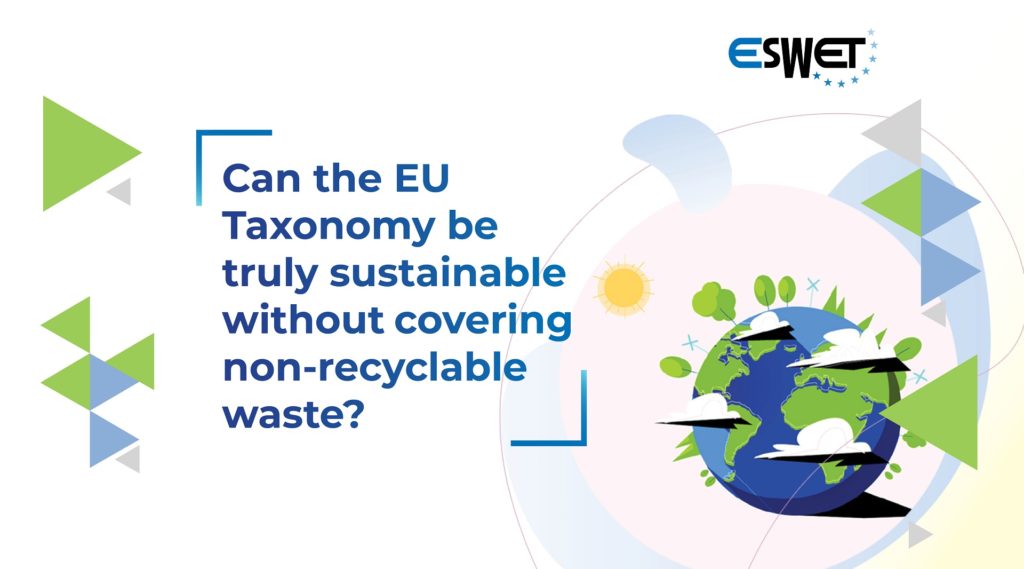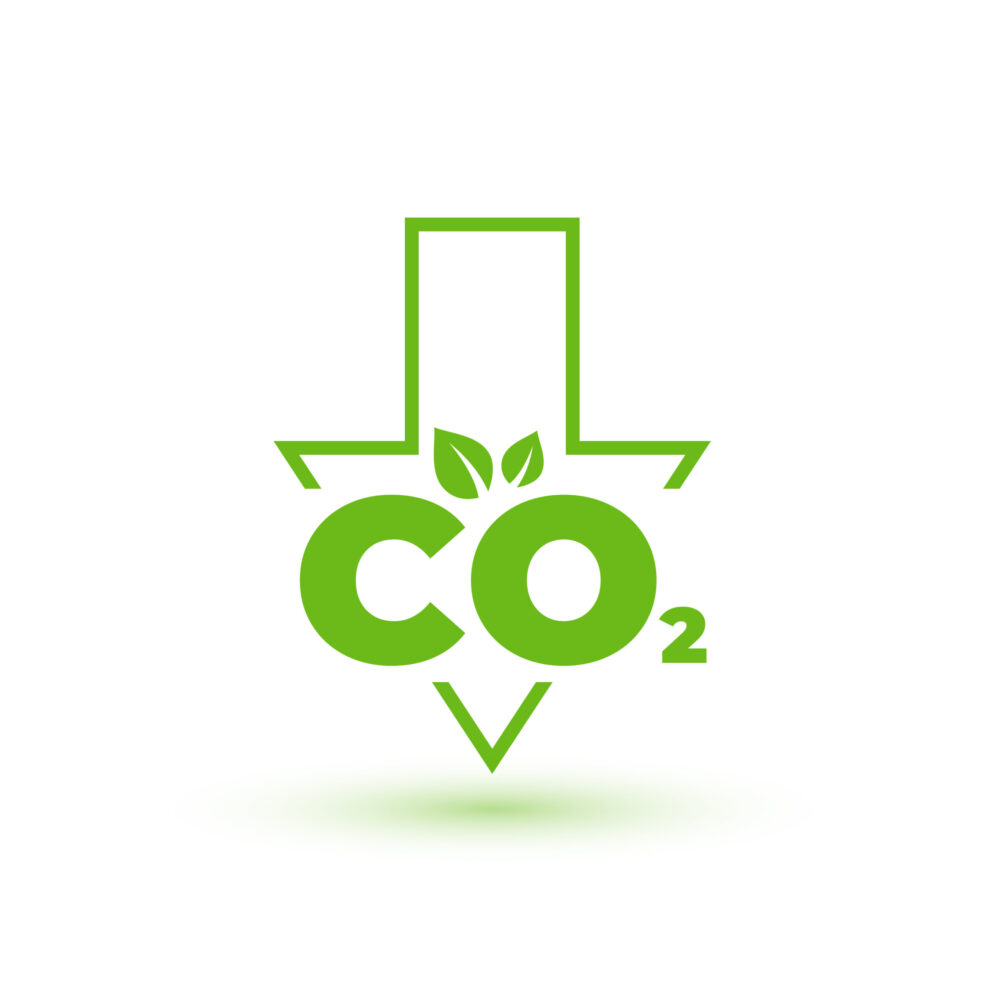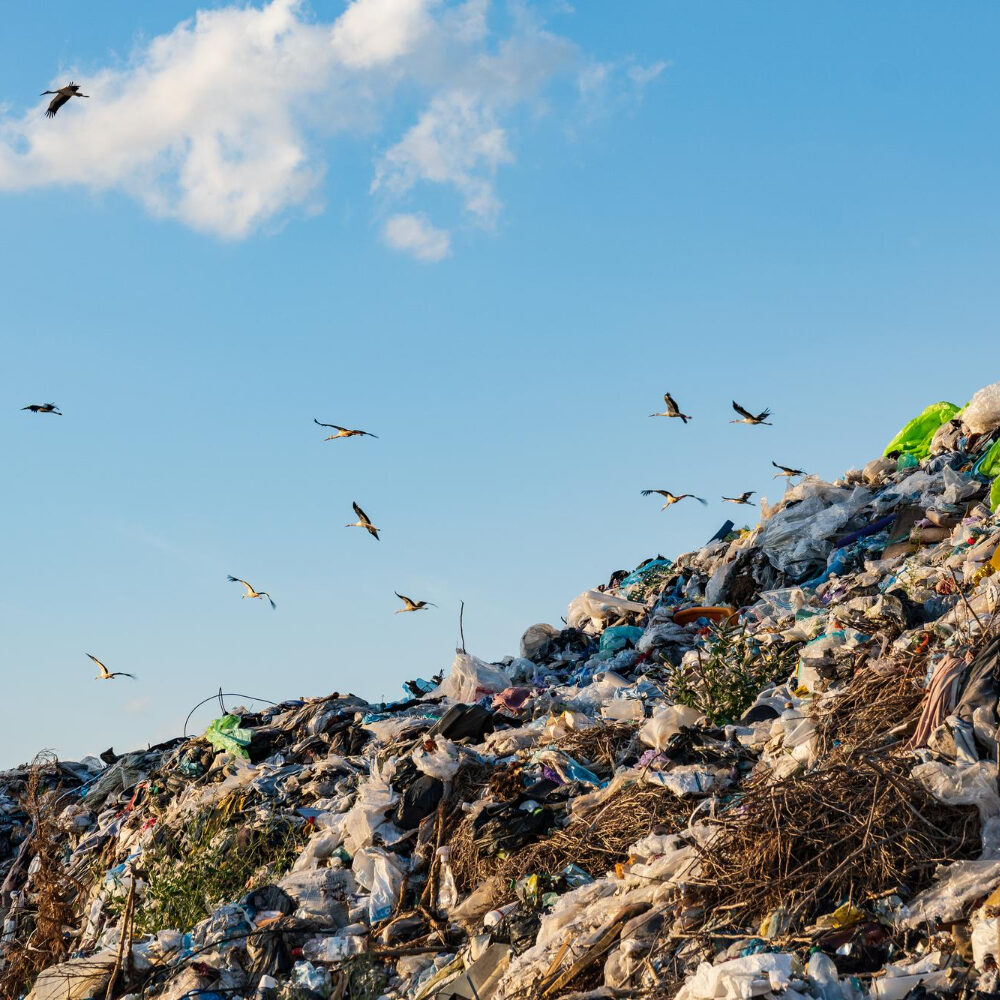Can the EU Taxonomy be truly sustainable without covering non-recyclable waste?
A group of experts discussed how important is for EU Taxonomy to address non-recyclable waste treatment. Here's what they said!

On 25 October 2021, ESWET’s event “Waste-to-Energy: The Beauty or the Beast?“ gathered NGOs, policymakers and trade associations to discuss better solutions to deal with non-recyclable waste. (Video recording and slides of the presentations are available here).
Within the event, particular attention was given to the coverage of non-recyclable waste in the upcoming EU Taxonomy, because of the environmental cost that waste generation and waste treatment have at a global and European level. It is ESWET opinion that residual waste treatment remained largely overlooked in the EU’s framework for sustainable finance.
During the dedicated panel discussion (starting at min 1:53:08), the representatives of the waste management sector (Valerie Plainemaison, FEAD Secretary-General and Patrick Clerens, ESWET Secretary-General) stressed that only an integrated system can efficiently manage municipal waste and achieve the EU targets for 2030. Waste prevention, reuse, and recycling are rightful priorities on the EU agenda but, if we consider the latest EU figures and the forecasts for the future, the share of non-recyclable waste is too significant to remain unaddressed.
Waste-to-Energy is the most sustainable solution for non-recyclable waste as it recovers energy and materials while preventing landfills and waste exports. Alleged alternatives like Material Recovery and Biological Treatment (MRBT) plants have not proven their efficiency so far. Moreover, they would not be enough to address the amount of non-recyclable waste generated in Europe without serious recourse to landfills.
Jonas Helseth, Director of Bellona Europa, was more sceptical regarding the potential inclusion of Waste-to-Energy in the EU Taxonomy, pointing out that the Taxonomy aims to create a gold standard for sustainable activities. Even if Waste-to-Energy is undeniably a better option than landfilling, he believed it should not be characterized as a green investment.
The representative of the Norwegian NGO focused his intervention on the importance of assessing activities through the lens of climate emergency mitigation. Building new Waste-to-Energy capacity should be postponed unless it proves to be carbon neutral, he stated. Therefore, deploying Carbon Capture Storage and Utilization (CCUS) technologies at WtE facilities could be a solution, but only with a seriously-committed sector.
The FEAD Secretary-General replied that an activity not listed in the Taxonomy would result in being perceived as not sustainable by the investors. Thus, she called on decision-makers to determine under which conditions Waste-to-Energy can be listed within the EU Taxonomy (i.e. when it is truly complementary to recycling and in line with the circular economy). Otherwise, EU countries plagued by landfills will bear an unsustainable financial burden to improve their waste treatment framework and risk missing the EU targets for waste management.
The event covered in detail topics like Waste-to-Energy in the Circular Economy, Environmental Impacts of non-recyclable waste, and Carbon Capture and Storage, inviting some of the main experts on the topic at the EU level, and reflecting a broad range of opinions on Waste-to-Energy. You can find all the information – including the slides of the presentations and the video recording – at the following link: https://eswet.eu/event-waste-to-energy-the-beauty-or-the-beast/


